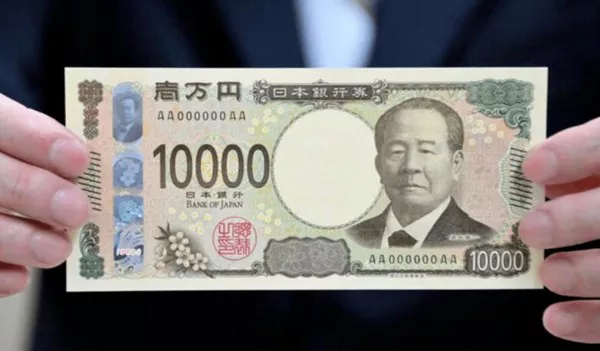In the world of currency, denominations reflect not only the economic stature of a country but also its historical and cultural values. For those interested in the intricacies of Japanese currency, one common question that arises is whether a 5000 yen bill exists. This article delves into the details surrounding Japanese banknotes, focusing on the 5000 yen denomination, its history, and its role in modern financial transactions.
The Japanese Yen Currency System
Japan’s currency system is managed by the Bank of Japan, which oversees the issuance and regulation of Japanese banknotes and coins. The yen, symbolized as ¥, is the official currency of Japan and is subdivided into 100 sen, though sen are no longer in common use. The currency features a range of denominations, each with its own design and historical significance.
The Japanese yen currency system includes banknotes in the denominations of ¥1,000, ¥5,000, and ¥10,000, as well as various coins. Each of these denominations plays a crucial role in daily transactions and has its own distinctive design and value.
Historical Overview of Japanese Banknotes
The history of Japanese banknotes dates back to the early 19th century when the first banknotes were issued by private banks and government institutions. The design and denominations of these banknotes have evolved over time, reflecting changes in Japan’s economy, politics, and society.
The current series of banknotes, known as the Series E, was introduced in 2004 and features notable figures from Japan’s history and cultural heritage. These banknotes are designed to be both functional and aesthetically pleasing, incorporating advanced security features to prevent counterfeiting.
The 5000 Yen Banknote: Its Existence and Significance
The Current 5000 Yen Note
The 5000 yen banknote is an integral part of Japan’s currency system. It features the portrait of Ichiyo Higuchi, a renowned Japanese writer from the Meiji era. Ichiyo Higuchi is celebrated for her contributions to Japanese literature, and her image on the 5000 yen note symbolizes the value Japan places on its cultural heritage.
The reverse side of the 5000 yen note depicts a design inspired by traditional Japanese art. The note includes images of the “kiri” tree (Paulownia), which is also a symbol of the Japanese Imperial Family, reflecting the connection between the country’s history and its currency.
Security Features and Design
The 5000 yen banknote incorporates several advanced security features to prevent counterfeiting. These include:
Watermarks: The note includes a watermark of Ichiyo Higuchi’s portrait, visible when held up to the light.
Security Threads: A metallic security thread is embedded in the note, which changes color when viewed from different angles.
Microprinting: Tiny text that is difficult to replicate is printed on various parts of the note.
Color-Shifting Ink: The denomination number on the note shifts color when tilted.
These features ensure the authenticity of the 5000 yen note and help maintain public confidence in the currency.
The Role of the 5000 Yen Bill in the Japanese Economy
Usage in Transactions
The 5000 yen note plays a significant role in everyday transactions in Japan. It is commonly used for medium-sized purchases and is frequently encountered in cash-based transactions, which remain prevalent in Japanese society. The note’s value makes it convenient for payments where using coins would be impractical, yet it is not as large a denomination as the 10,000 yen note.
See Also: How Much Does It Cost to Make a 5 Yen Coin?
Psychological and Economic Impact
The 5000 yen note also has psychological and economic implications. Its presence helps in managing cash flow and transaction sizes, balancing between the lower denominations and the higher 10,000 yen note. This balance helps in stabilizing consumer spending and facilitates ease of transactions.
Collectibility and Historical Value
Collectors’ Interest
Japanese banknotes, including the 5000 yen note, are of interest to currency collectors. Collectors value notes for their historical, artistic, and monetary significance. Special editions and older series of banknotes, including those with unique serial numbers or historical context, can be highly sought after by collectors.
Historical Evolution
The evolution of the 5000 yen note reflects broader changes in Japanese currency design and economy. Older series of the 5000 yen note, with different designs and historical figures, provide insights into Japan’s economic and cultural history. The transition from earlier designs to the current Series E notes illustrates shifts in both aesthetic preferences and technological advancements in currency production.
Comparison with Other Denominations
1000 Yen and 10000 Yen Notes
The 1000 yen and 10,000 yen notes serve different purposes compared to the 5000 yen note. The 1000 yen note, featuring the portrait of Hideyo Noguchi, is used primarily for smaller transactions and everyday purchases. The 10,000 yen note, with a portrait of Yukichi Fukuzawa, is used for larger transactions and is often seen as a symbol of wealth and economic stability.
Currency Denominations and Their Functions
Each denomination of Japanese banknotes plays a specific role in the economy. The 5000 yen note fills the niche between the 1000 yen and 10,000 yen notes, catering to medium-sized transactions and ensuring convenience in cash handling. The coexistence of these denominations helps maintain a functional and efficient currency system.
Conclusion
The 5000 yen bill is an essential component of Japan’s currency system, offering a blend of historical, cultural, and practical significance. Its design reflects Japan’s appreciation for its literary and cultural heritage, while its security features ensure its authenticity and reliability in transactions. The role of the 5000 yen note in everyday transactions, its appeal to collectors, and its place within the broader currency system underscore its importance in Japan’s financial landscape.
As we move towards an increasingly digital future, the 5000 yen note, like other denominations, will continue to be a symbol of Japan’s rich monetary history and cultural values. Its presence in the currency system serves as a reminder of the intricate balance between tradition and modernity in the world of finance.
Related Topics:




























